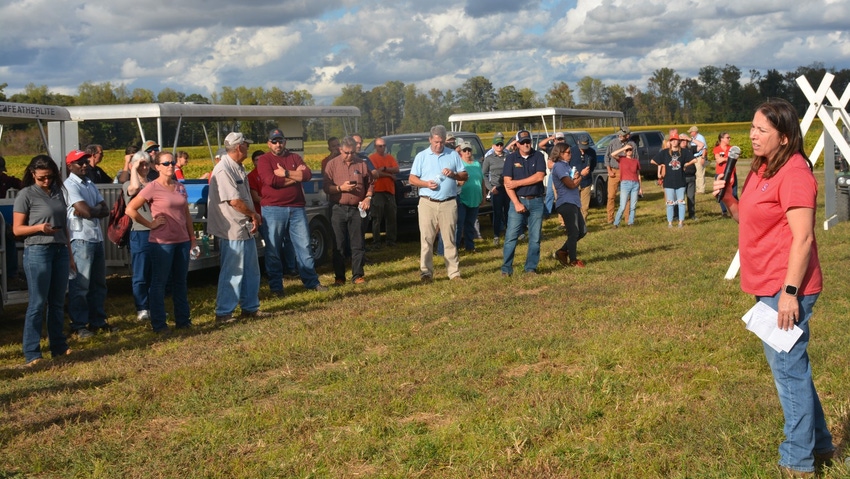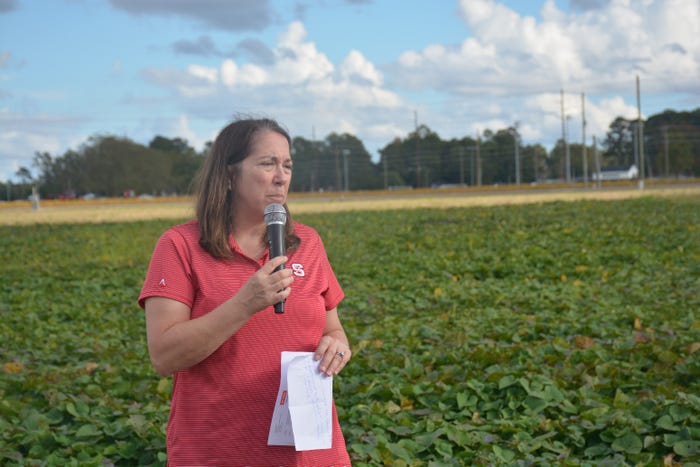
The cardinal rule of herbicide resistance management is don’t rely on just one mode of action to control troublesome weeds. That can be hard in a crop like sweetpotatoes because there are very few herbicides registered for the crop.
That’s why it’s important to rotate sweetpotatoes with other crops where there are other herbicides registered for those crops to control such weed pests as Palmer amaranth.
Speaking at the North Carolina Sweetpotato Field Day at the Cunningham Research Station in Kinston Oct. 13, Katie Jennings, weed scientist Extension specialist for vegetable and small fruit crops at North Carolina State University, emphasized that North Carolina sweetpotato farmers are doing a good job with crop rotations.
Jennings said cultivation is another important resistance management tool in sweetpotatoes. She noted that sweetpotato farmers often turn to cultivation two to three times a year to manage resistant weeds.
“If you have some weed escapes late in the season, it’s important to go out and hand remove some of those weeds, especially resistant populations, like Palmer amaranth. In sweetpotatoes, we do a lot of hand removal already. Make sure we’re removing those weeds before they go to seed,” she said.
As for chemical control of weeds, Jennings noted that the primary control method has been to use Valor or flumioxazin preplant followed by a treatment of Dual Magnum and sometimes an application of Command or clomazone that is often applied with the preplant application of Valor or applied post-transplant, soon after planting.
“By including Command or clomazone, you’re putting in another mode of action, and it is going to control some of those small-seeded weeds and annual grasses. Dual Magnum is a pre-emergence herbicide so it’s not going to control anything post, but it is going to do a good job controlling things right in that planting furrow that was disturbed when you transplanted,” Jennings said.
“Dual Magnum is another good way to control some of those weeds that might have some resistance to some of the other herbicides. Our group has looked at Dual Magnum recently and we found in North Carolina there are some populations of Palmer amaranth that are more tolerant to Dual Magnum than other populations. We are working on that and there is some other work at North Carolina State being done,” she added.
“The bulk of our work in sweetpotatoes is herbicide screening work. We’re trying to identify herbicides we can use safely in sweetpotato, but also control those weeds you have. These might be herbicides that are registered in row crops here in North Carolina that you’re familiar with, and we’re just trying to see if there is crop safety in sweetpotatoes,” she said.
Jennings’s team is also examining herbicides that are not used in the Southeast, but may be used in other regions of the country such as the Midwest, to see if they may work in North Carolina. “We are trying really to beat the bushes and look for some different herbicides we can use,” she said.

Katie Jennings says cultivation is another important resistance management tool in sweetpotatoes. (John Hart)
About the Author(s)
You May Also Like






